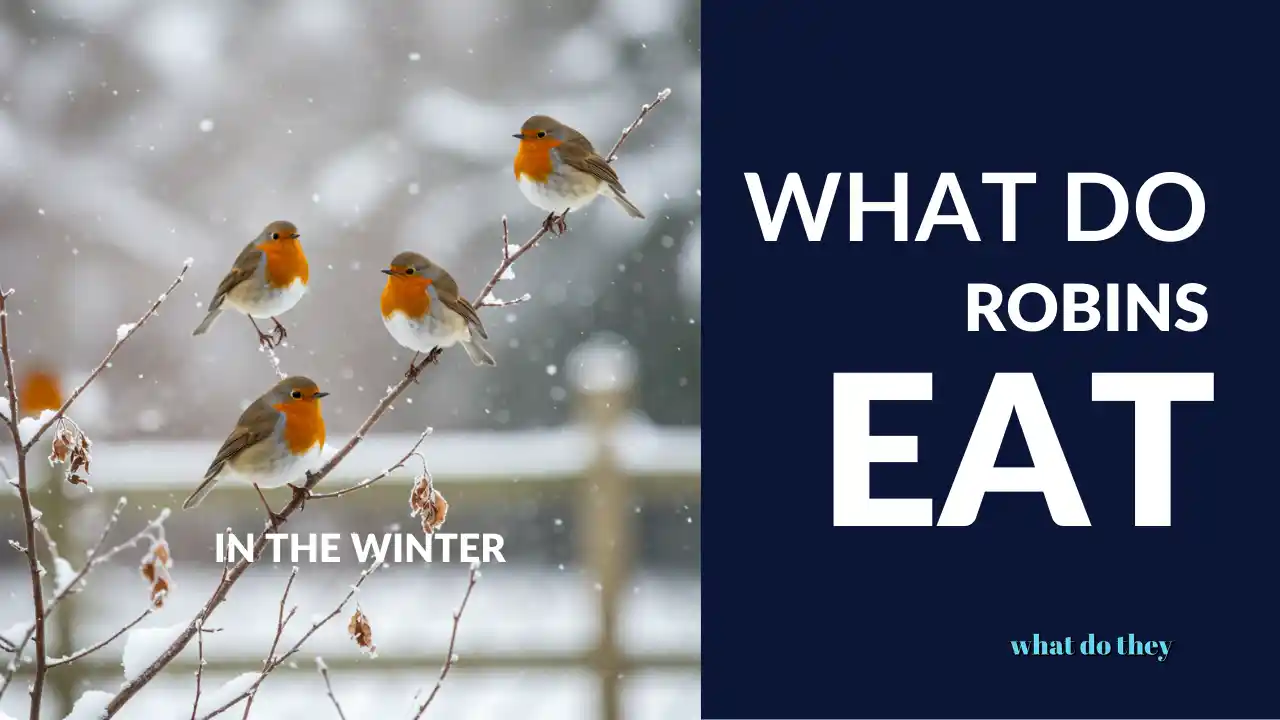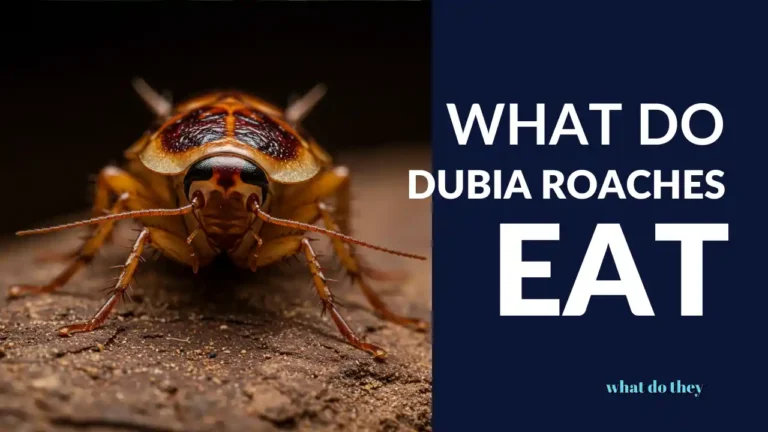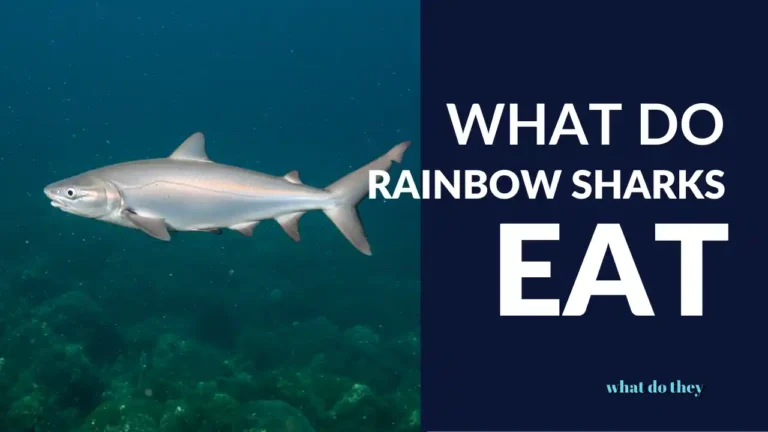When winter arrives and the ground freezes, many birds migrate south to warmer climates. However, American robins are surprisingly adaptable, and many choose to stay in northern areas year-round. This raises an interesting question: what do robins eat in the winter when worms and insects are hard to find? If you love to read about what different mythical creatures eat, take a look at the following:
So, What Do They has prepared this blog so you’ll learn the answer to the question: What do Robins Eat in the Winter? Let’s explore how these resilient birds adapt their diet to survive the cold months.
The Robin’s Normal Diet

Before understanding their winter diet, it helps to know what robins typically eat during warmer seasons:
- Earthworms (up to 40% of their diet in spring and summer)
- Insects including beetles, caterpillars, and grubs
- Snails and other small invertebrates
- Berries and fruits as supplemental food
Robins are famous for hopping across lawns, tilting their heads to listen for worms beneath the soil. But what happens when the ground freezes solid?
Winter Diet Shift: Berries Become Essential
What do robins eat in the winter when worms are unavailable? They undergo a remarkable dietary shift:
Berries and Fruits
During winter, robins transform from insectivores to frugivores (fruit-eaters). Up to 90% of their winter diet consists of:
- Crabapples
- Hawthorn berries
- Mountain ash berries
- Winterberry
- Holly berries
- Juniper berries
- Sumac fruits
- Rose hips
- Hackberries
- Dogwood berries
- Wild grapes
- Bittersweet berries
Many of these fruits remain on plants throughout winter, providing a crucial food source. Interestingly, many winter berries are unpalatable in fall but become sweeter after freezing and thawing cycles, making them perfect winter robin food.
What Do Robins Eat in the Winter Besides Berries?
While fruits form the majority of their winter diet, robins will take advantage of any food sources they can find:
Other Natural Winter Foods
- Tree sap from damaged trees or woodpecker holes
- Seeds when available
- Frozen insects or larvae they can find in tree bark
- Any insects that emerge during temporary thaws
Human-Provided Foods
Robins generally don’t visit bird feeders for seeds, but they will eat:
- Raisins, blueberries, or cranberries placed on platform feeders
- Chopped apples and other fruits
- Mealworms (a special treat they love)
- Suet mixtures that include fruits and berries
Winter Foraging Behavior
The question of what do robins eat in the winter is closely tied to how they find that food. Their foraging behavior changes dramatically:
From Ground to Trees
- Spring/summer: Focus on ground foraging for worms and insects
- Winter: Focus on trees and shrubs for berries and fruits
Flock Formation
- Spring/summer: Generally territorial individuals or pairs
- Winter: Form nomadic flocks of 10 to hundreds of birds
These winter flocks move around searching for berry sources, sometimes traveling considerable distances. When they find a good food source like a tree full of crabapples or holly berries, the entire flock may stay for days until the food is depleted.
Regional Differences
What do robins eat in the winter varies by region:
Northern Areas
Robins that stay in the northern United States and southern Canada rely almost exclusively on frozen berries and fruits.
Mid-Atlantic and Southeast
These robins may still find some insects during milder winter days, supplementing their berry diet.
Southwest
Desert-dwelling robins may find more active insects year-round but still rely heavily on cactus fruits and berries.
Physiological Adaptations for Winter Diet
Robins have several adaptations that help them switch to a winter berry diet:
- Their digestive system changes to better process fruits instead of insects
- They can digest certain compounds in berries that would be toxic to other animals
- They can survive on lower protein intake during winter
- Their metabolism slows during very cold periods
How You Can Help Winter Robins
If you’re wondering what do robins eat in the winter in your yard, you can help supplement their diet by:
Planting Berry-Producing Trees and Shrubs
- Crabapple
- Holly
- Winterberry
- Mountain ash
- Dogwood
- Juniper
- Viburnum
- Hawthorn
Providing Robin-Friendly Foods
- Place fruit on platform feeders
- Offer rehydrated raisins or cranberries
- Provide mealworms (dried or live)
- Leave fallen fruits in your yard
Water Sources
Don’t forget that robins need water even in winter. A heated bird bath can be incredibly valuable to robins when natural water sources are frozen.
Survival Challenges
Despite their adaptability, winter poses serious challenges for robins:
Food Depletion
By late winter, many berry sources may be depleted. This is when robins are most vulnerable and why early spring is a critical time.
Competition
What do robins eat in the winter when other birds want the same food? Robins must compete with other berry-eating birds like cedar waxwings, bluebirds, and mockingbirds.
Energy Balance
Robins must consume enough calories to maintain body heat during cold nights. One bad snowstorm that covers food sources can be life-threatening.
Early Spring Transition

As winter ends, robins begin transitioning back to their insect diet:
- They look for the first thawed patches of ground to probe for worms
- They take advantage of early insect hatches
- They gradually reduce berry consumption as more insects become available
This transition period is critical, as winter food stores are often depleted while spring food may still be scarce.
So the Answer to What do Robins Eat in the Winter is…
Robins survive primarily on berries and fruits that remain on trees and shrubs throughout the cold months. This dramatic shift from their warm-weather diet of worms and insects showcases the remarkable adaptability of these familiar birds. By switching food sources and foraging locations, and still not understanding what do Robins eat in the winter, helps robins manage to endure even in areas with freezing temperatures and snow cover.
Understanding what do robins eat in the winter helps explain why robins aren’t always found in the same habitats year-round. It also offers insight into why certain trees and shrubs are so important for winter bird survival. By planting berry-producing native plants in our yards, we can help ensure these red-breasted birds have enough to eat during the challenging winter months.
The next time you spot a robin in winter—perhaps a whole flock devouring berries from a crabapple tree—you’ll know you’re witnessing an important survival strategy that helps these beloved birds make it through until the worms return in spring.








Leave a Comment